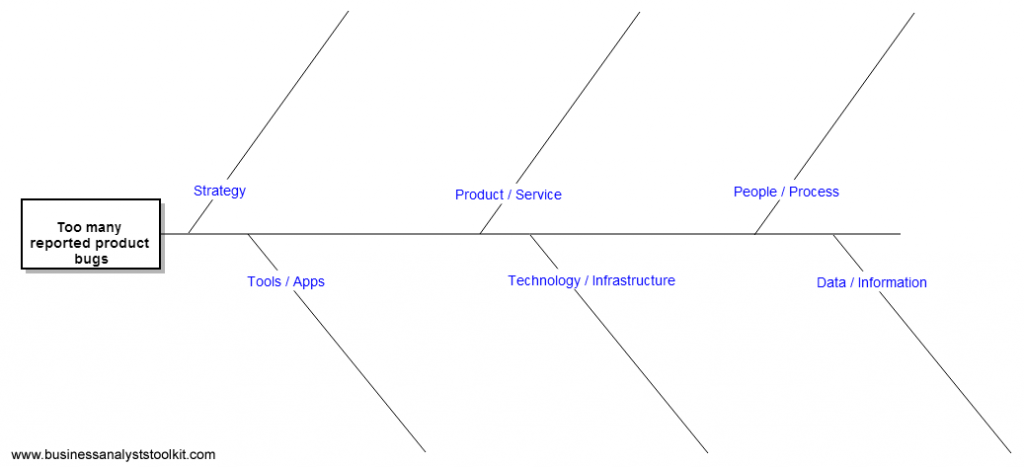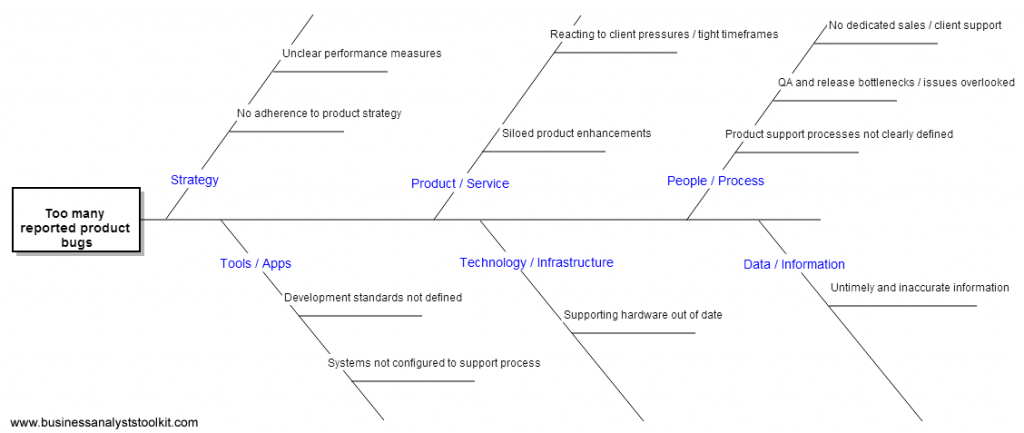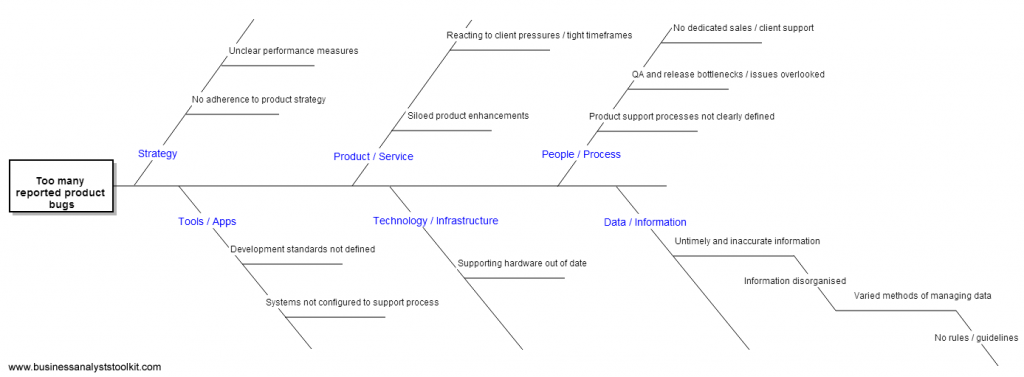About fishbone analysis
Whenever there’s a problem to explore, which is most often during the initiation of a project, it’s useful to have a visual means of your analysis. Like mind mapping, the fishbone analysis method is a business analysis technique that enables you to explore the likely causes of a problem. The fishbone method can be used in brainstorming sessions or as a personal thinking tool.
In my fishbone analysis example below, I use the six categories for defining a problem to structure my fishbone diagram.
Here’s how it works in 4 steps…
Step 1 – Identify the problem
This step requires you to write down the exact problem presented in the format shown in the fishbone diagram below. I have used the free online drawing tool called Gliffy for this example.
The problem stated is “Too many reported product bugs” where customers are reporting a high level of product bugs resulting in higher level of support desk calls and issue resolution requests.
The problem, or “effect”, is written on the head of the fish and the “causes” (in Step 2) are written on the body of the diagram as the “bones”.
Step 2 – Identify the main factors involved
In this fishbone analysis example, we’re using the six categories for defining a problem to get started. They are:
- strategy
- product /service
- people / process
- tools / applications
- technology / infrastructure
- data / information.
These categories are how I structure my thinking, but they can be whatever makes logical sense to the problem and makes sense to you. Add the categories as the main bone structure of the diagram as shown below.
Step 3 – Identify potential causes
This is where the brainstorming begins, for each main category think of as many possible causes that may be related to that category. For example, under the “Strategy” I have identified two possible causes, “No adherence to product strategy” and “Unclear performance measures”.
The lack of adherence to product strategy may mean that there’s no real focus on particular aspects of the product which would reduce bugs (or reported bugs). Unclear performance measures indicate that strategically there is no organisational focus, or set measures, on reducing occurrences of reported bugs. Each of these sub-branches could be further expanded with this type of reasoning.
For each identified problem, it may be required to break the problem down into further sub-branches. For example, the “Data / Information” category identified issues with the availability of information, e.g., reports, that would identify actions that could be undertaken to mitigate the level of reported bugs. In the example below, only one problem branches off another – as though I’m performing “The Five Whys” root cause analysis – however several branches can be drawn from any one branch to show the breakdown of likely causes.
This fishbone diagram would become very large if I were to write down every possible cause and each subsequent cause.
Step 4 – Perform an analysis of your fishbone diagram
This business analysis technique enables you to very quickly explore, visualise and gather data about the potential causes of the problem. It also shows the relationships between causes by nature of the “sub-branching”.
When all possible causes are identified then the next step is to investigate problems that may support solutions that have the most effective impact for the business. For example, under the “People / Process” category, the problem “QA and release bottlenecks / issues overlooked” would be worth closer examination for a solution that would reduce the level of reported bugs.
That’s it! I hope you liked my fishbone analysis example. If you have any questions or feedback, please leave a comment below.



